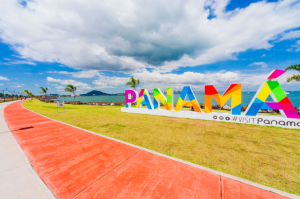Panama City is a packed metropolis, known for its hustle and bustle, business center, and luxury residential, office, and hotel towers. These have become the public face of Panama City, and the iconic symbols of a city, and country on the rise. But if you talk about the history of the city, the Canal, and how it’s been settled over the years, you’d be remise if you didn’t highlight the Amador Causeway. The Amador Causeway and islands lay on the far south side of Panama City. The islands are connected by a thin strip of land, and subsequent avenue that connects them with the city, and have a rich history and bright future ahead of them, all in one. For years, Panamanians have been using this part of the city as a refuge from the hustle and bustle; a place to live or spend the day on the water, just minutes from downtown.
What does the Amador Causeway look like?
One of the big draws of living on the Causeway is its beautiful natural, yet refined setting. This area is a major sailing port for small ships (and some bigger ones) heading through the Canal, or just docking in the city. It’s oceanfront Panama at its best, with beautiful rocky coastlines, palm tree lined streets, marinas, and spectacular views of downtown Panama City and the Pacific Ocean. The architecture is a blend of classic Canal Zone designs mixed with newer Caribbean-inspired beach estates. Amador consists of four islands: Naos, Culebra, Perico, and Flamenco. Perico Island is the most popular for residents, tourism, and commerce, while Naos is famous for the Smithsonian Tropical Research Institute and a number of labs.
The Amador Causeway has 4 hotels, a number of restaurants that run the gamut in taste and budget, and a lot of outdoor activities available to tourists and residents. Amador is also home to the Balboa Yacht Club, which is one of the most famous, and oldest yacht clubs in the country, and also an icon from the American Panama Canal Zone years. Many tourists and business travelers choose to stay on the Causeway due to its quiet, tropical setting, while still being close to the city’s attractions, as well as the business center.
A bit of history in every step, on Panama’s Amador Causeway
The Causeway is famous for a number of reasons in history, with the two greatest being its protective fortifications (built for WWII, but never used), and one of Manuel Noriega’s compounds, where he once fled and has since been ransacked to ruins after his arrest in 1990. The Causeway was also a very iconic location for wealthy Canal managers and Zonian (people born during the American occupation of the Panama Canal Zone) families. It is the literal mouth of the Canal on the Pacific side and is still a great place to watch some of the world’s biggest, and greatest ships as they transit towards the Atlantic side of the Canal. You can even still walk along the long paths that connect the mainland to the islands and see life as it would have been almost 100 years ago, as you pass the old and the new blending, to create what now is one of Panama’s most luxurious, relaxing refuges from the city.
